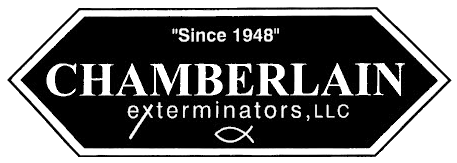Worried Your Home isn’t Protected?
Thousand Eggs A Termite Queen Can Lay Per Day
Years A Termite Queen Can Live
Million Homes Per Year In US With Damage
Billion $ In US Damage Per Year
What are the signs you have Termites?
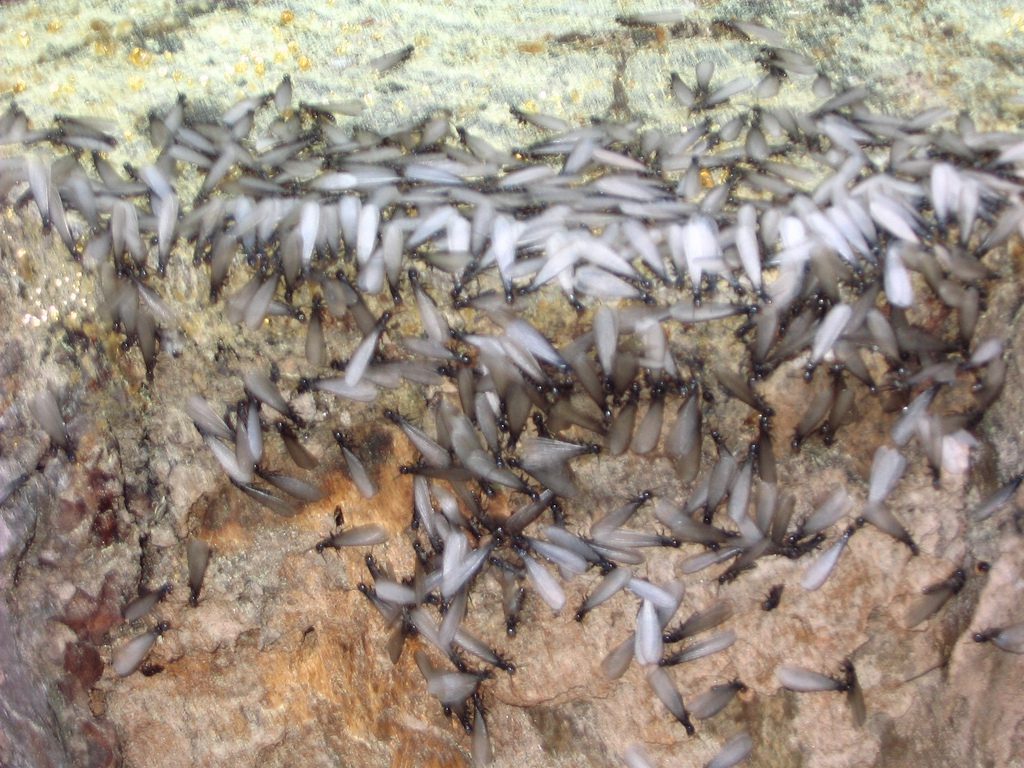 Termites often swarm in warmer weather and after a rain shower to start new colonies. The swarming event can be brief, so even if you do not see flying termites, you are likely to see the discarded wings around window sills, doors, heating vents, bathtubs and sinks after a swarm takes place. Termite swarmers use their wings to move away from their original colony. Their wings break off and they pair up and find locations with a wood source where the male and female can begin a new colony. Whether you see the swarm or think there might have been one, contact us immediatly.
Termites often swarm in warmer weather and after a rain shower to start new colonies. The swarming event can be brief, so even if you do not see flying termites, you are likely to see the discarded wings around window sills, doors, heating vents, bathtubs and sinks after a swarm takes place. Termite swarmers use their wings to move away from their original colony. Their wings break off and they pair up and find locations with a wood source where the male and female can begin a new colony. Whether you see the swarm or think there might have been one, contact us immediatly.
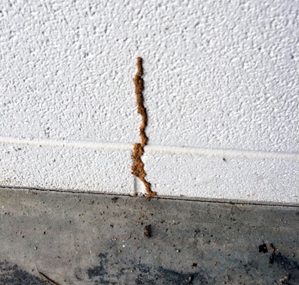 Foraging worker termites, the ones that eat wood to feed the rest of the colony, must stay in moist conditions and away from natural enemies like ants. To get across barriers between the soil and the wood above, termites construct small, meandering “mud” tubes from moist soil and excrement. The tubes are about the diameter of a pencil, though they can become wider. Tubes can be seen on foundation walls or inside walls, on plumbing pipes and spanning crawl spaces between the ground and the subfloor. These termite highways are a sure sign termites are or have been in the home.
Foraging worker termites, the ones that eat wood to feed the rest of the colony, must stay in moist conditions and away from natural enemies like ants. To get across barriers between the soil and the wood above, termites construct small, meandering “mud” tubes from moist soil and excrement. The tubes are about the diameter of a pencil, though they can become wider. Tubes can be seen on foundation walls or inside walls, on plumbing pipes and spanning crawl spaces between the ground and the subfloor. These termite highways are a sure sign termites are or have been in the home.
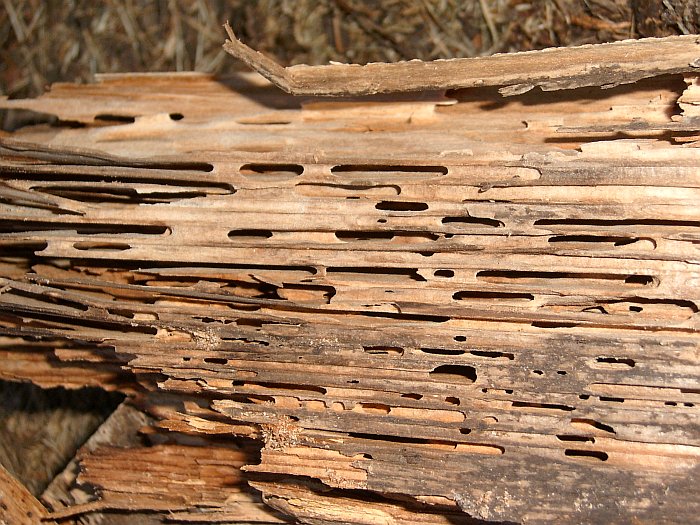 Termites eat wood from the inside out along the grain, so damage often isn’t visible until it becomes significant. Termite inspectors often will tap to listen for hollow-sounding wall studs, baseboards and floors. If the wood gives way, it may reveal a hollowed-out honeycomb pattern. The wood also will include some “mud” similar to mud tubes, plus live termites.
Termites eat wood from the inside out along the grain, so damage often isn’t visible until it becomes significant. Termite inspectors often will tap to listen for hollow-sounding wall studs, baseboards and floors. If the wood gives way, it may reveal a hollowed-out honeycomb pattern. The wood also will include some “mud” similar to mud tubes, plus live termites.
Formosan termites are an especially robust, destructive species with large colonies. Walls of infested buildings may contain carton nests that hold enough moisture to allow the colony to live entirely above ground, sometimes causing bulging walls.
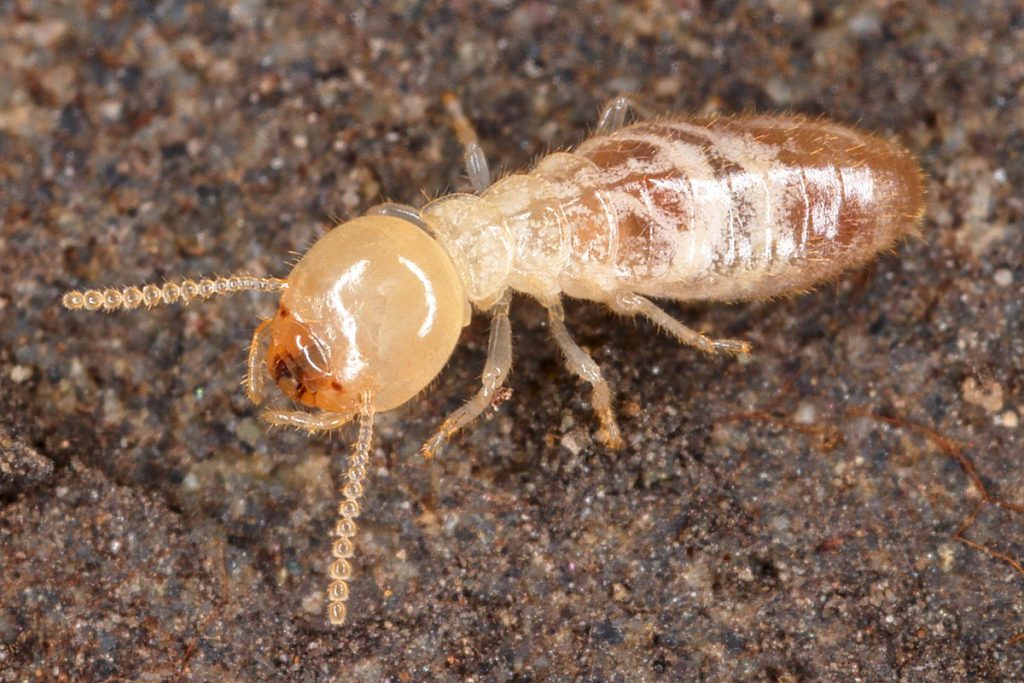
When building or remodeling in your home, keep an eye out for soft-bodied, light-colored insects about the size of a grain of rice. Termites avoid light, so they are seldom visible in open areas.
So is it a Termite Or An Ant?
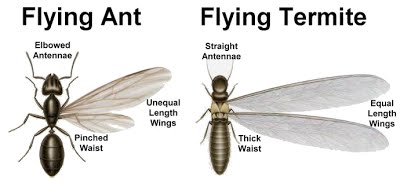
What makes up a colony?
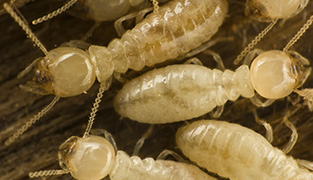
Workers make up the overwhelming majority of the colony because they are responsible for feeding it, including the queen. These soft-bodied, clear to light-colored termites are about the size of grains of rice. They rarely leave the dark, damp tunnels that run from the colony through the soil and into the wood of buildings. Workers continuously forage for food, maintain the nest and tend to the queen and her brood.
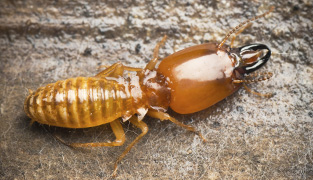 Soldiers are the defenders of the colony. They have long heads and powerful jaws, and are responsible for colony defense against natural termite enemies such as ants.
Soldiers are the defenders of the colony. They have long heads and powerful jaws, and are responsible for colony defense against natural termite enemies such as ants.
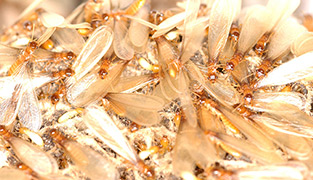
Male and female reproductive termites develop wings, leave the parent colony in a swarm, mate and start new colonies.
 She is the largest and most important colony member because she can lay eggs at a rate of one every second ― as many as a million eggs in her lifetime. She is large, up to 4 inches long, and can live for a decade or longer under ideal conditions. If she dies, a new queen will arise to take her place and keep the colony going.
She is the largest and most important colony member because she can lay eggs at a rate of one every second ― as many as a million eggs in her lifetime. She is large, up to 4 inches long, and can live for a decade or longer under ideal conditions. If she dies, a new queen will arise to take her place and keep the colony going.
Take A Termite Risk Assessment!
Will Termites Pick Your Home Next?
